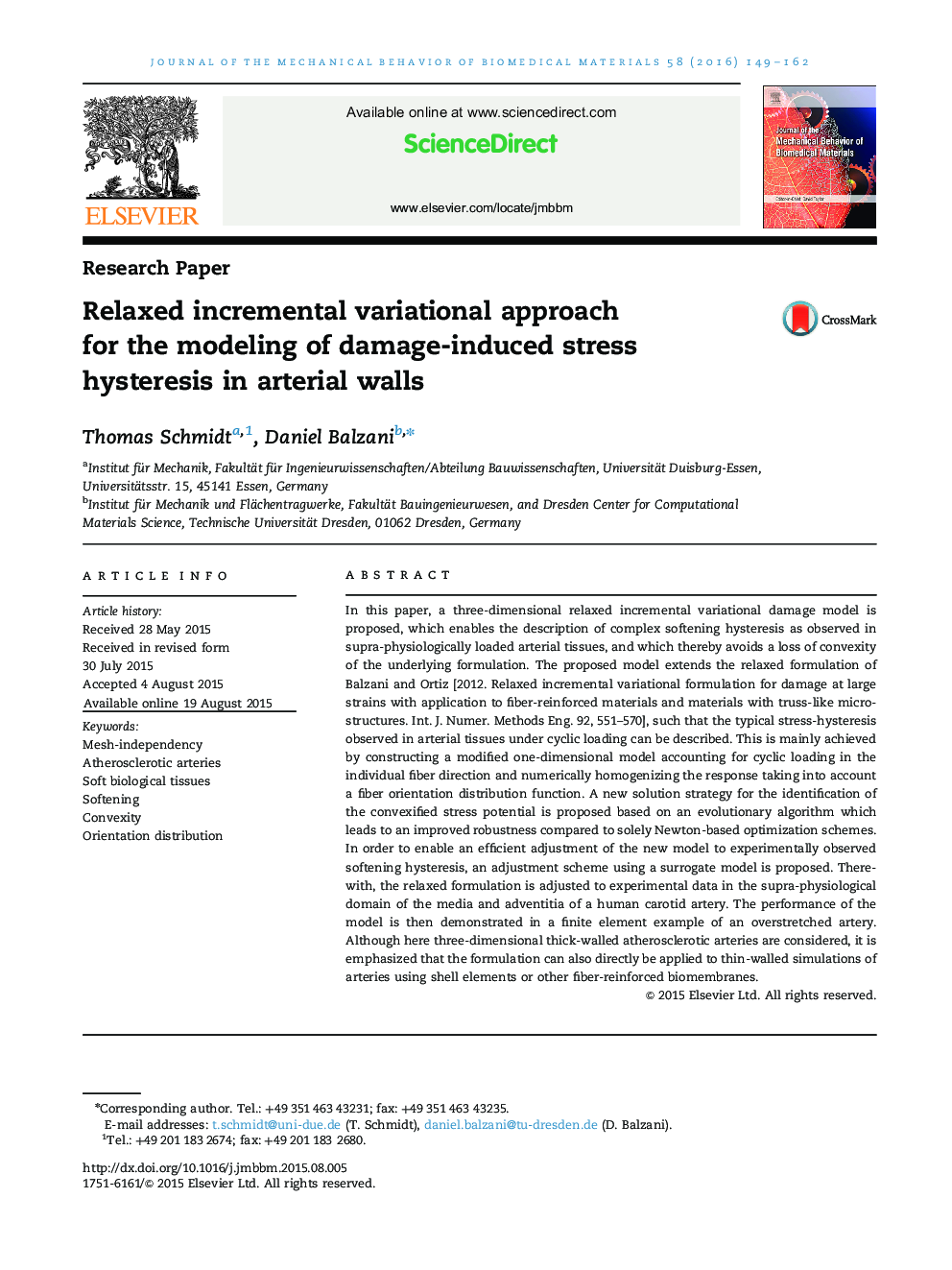| کد مقاله | کد نشریه | سال انتشار | مقاله انگلیسی | نسخه تمام متن |
|---|---|---|---|---|
| 7208159 | 1469087 | 2016 | 14 صفحه PDF | دانلود رایگان |
عنوان انگلیسی مقاله ISI
Relaxed incremental variational approach for the modeling of damage-induced stress hysteresis in arterial walls
ترجمه فارسی عنوان
رویکرد متنوع افزایشی آرام برای مدل سازی هیسترزیس فشار ناشی از آسیب در دیواره های شریانی
دانلود مقاله + سفارش ترجمه
دانلود مقاله ISI انگلیسی
رایگان برای ایرانیان
کلمات کلیدی
شبکه مستقل، شریانهای آترواسکلروتیک، بافت های نرم بیولوژیک، نرم کردن محرک توزیع جهت،
موضوعات مرتبط
مهندسی و علوم پایه
سایر رشته های مهندسی
مهندسی پزشکی
چکیده انگلیسی
In this paper, a three-dimensional relaxed incremental variational damage model is proposed, which enables the description of complex softening hysteresis as observed in supra-physiologically loaded arterial tissues, and which thereby avoids a loss of convexity of the underlying formulation. The proposed model extends the relaxed formulation of Balzani and Ortiz [2012. Relaxed incremental variational formulation for damage at large strains with application to fiber-reinforced materials and materials with truss-like microstructures. Int. J. Numer. Methods Eng. 92, 551-570], such that the typical stress-hysteresis observed in arterial tissues under cyclic loading can be described. This is mainly achieved by constructing a modified one-dimensional model accounting for cyclic loading in the individual fiber direction and numerically homogenizing the response taking into account a fiber orientation distribution function. A new solution strategy for the identification of the convexified stress potential is proposed based on an evolutionary algorithm which leads to an improved robustness compared to solely Newton-based optimization schemes. In order to enable an efficient adjustment of the new model to experimentally observed softening hysteresis, an adjustment scheme using a surrogate model is proposed. Therewith, the relaxed formulation is adjusted to experimental data in the supra-physiological domain of the media and adventitia of a human carotid artery. The performance of the model is then demonstrated in a finite element example of an overstretched artery. Although here three-dimensional thick-walled atherosclerotic arteries are considered, it is emphasized that the formulation can also directly be applied to thin-walled simulations of arteries using shell elements or other fiber-reinforced biomembranes.
ناشر
Database: Elsevier - ScienceDirect (ساینس دایرکت)
Journal: Journal of the Mechanical Behavior of Biomedical Materials - Volume 58, May 2016, Pages 149-162
Journal: Journal of the Mechanical Behavior of Biomedical Materials - Volume 58, May 2016, Pages 149-162
نویسندگان
Thomas Schmidt, Daniel Balzani,
